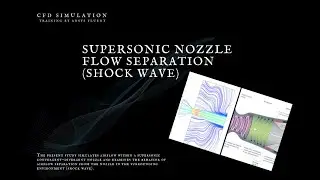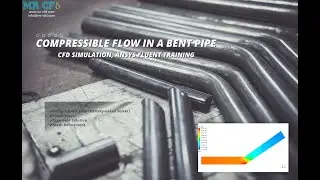Brake Disk System Conduction Heat Transfer, ANSYS Fluent Simulation
Brake is among the most widespread units with non-stationary friction. We use braking friction systems for damping the kinetic energy of the rotational or translational motion of masses by friction forces. By braking, one can decrease the velocity of relative sliding to zero or the given value. In the course of the operation of braking units, parameters like velocity, temperature, and friction-wearing characteristics of materials vary greatly.
In this project, the heat conduction of a brake disk system is modeled and simulated by ANSYS Fluent. The disk revolves at a speed of 20rad/s and a braking pad is set to make contact with the disk. This frictional contact will result in heat generation inside the disk and the pad. The heat produced in the contact region will be dissipated based on the heat conduction formula. The energy and laminar model is activated. Also, the MRF model (frame motion) is activated to model the rotational motion of the disk. A UDF is implemented to account for the radial heat flux.
The modeled geometry for this simulation consists of a brake disk a pad and a fluid flow domain. We design and mesh it inside Gambit®. The mesh type used for this geometry consists of both types of structured and unstructured (hybrid) and the element number is 198594.
You can read more about this simulation and order its training video by clicking on the link below:
https://www.mr-cfd.com/shop/brake-dis...




![PHARAON–5 минут назад минус [Music Channel]](https://images.videosashka.com/watch/WU1TOKfbQW8)

![[방탄소년단/BTS] 소우주 (Mikrokosmos) 교차편집 (Stage Mix)](https://images.videosashka.com/watch/P1FcNUe7JD4)












